How to prepare your yard and garden for spring
DIY expert Chris Wade shares spring essentials to refresh any outdoor space and prepare for more time outdoors on ‘Fox & Friends.’
It’s time to dig up your potatoes! Or so you think.
There’s a fine line when it comes to completing your potato harvest, according to garden columnist Jessica Damiano.
The expert wrote in an Associated Press piece that our senses can’t help us — as they can with other vegetables and fruits — when it comes to deciphering whether or not potatoes are good to go.
FRUIT OR VEGETABLE? TAKE THIS QUIZ TO TEST YOUR HEALTHY FOOD KNOWLEDGE
Pulling up potatoes too soon can leave plant parents with measly tubers — and can put the plant’s root system at risk of permanent stress, she indicated.
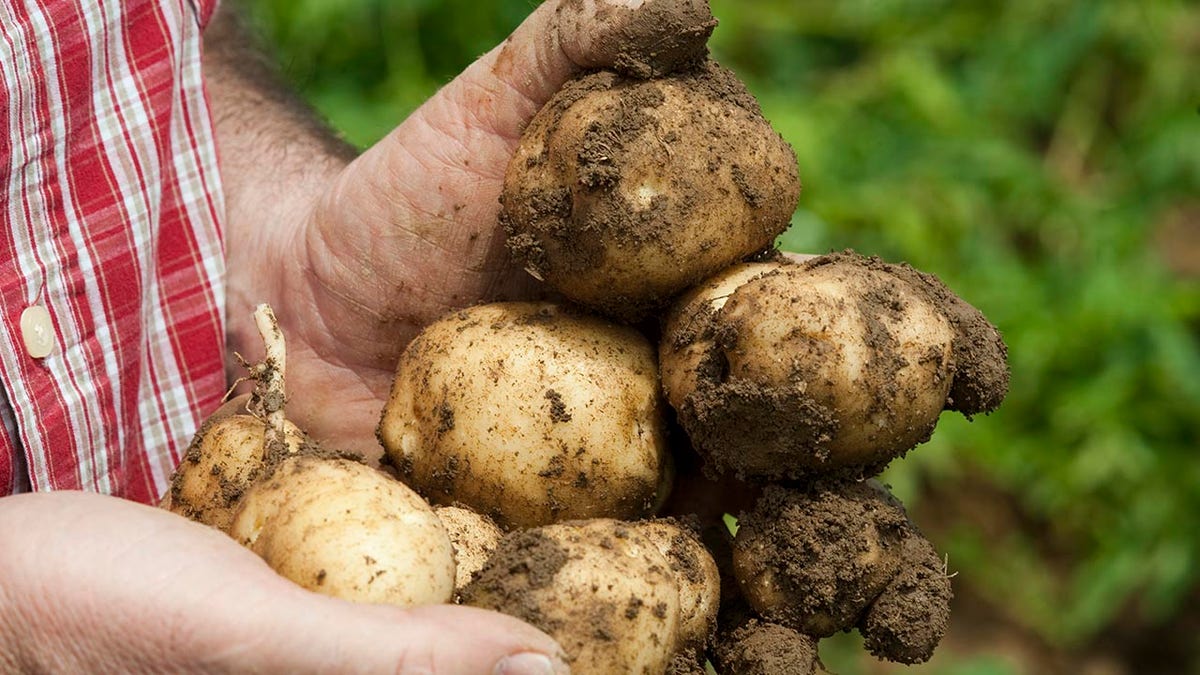
Freshly harvested potatoes are shown here, still covered in soil. (Edwin Remsburg/VW Pics via Getty Images)
Meanwhile, your potatoes could get frost damage if you wait too long — and can also begin to split, sprout or rot underground, Damiano said.
Gardening expert and host of the Magnolia Workshops course "Starting a Home Garden" Kevin Espiritu told Fox News Digital this week that most spring-planted potatoes should be ready for harvest between July and October.
Harvesting timing is largely dependent on region, he explained, since hot southern states can harvest in the off season, from January to July, while California can grow two separate crops.
GARDENING 101: GROW YOUR OWN FOOD AS INFLATION MAINTAINS A HISTORIC HIGH
Northeastern regions have typical harvest dates from August through early October, while northwestern states can see early harvests in July due to early planting.
Most early-season potato varieties will take 75 to 90 days to fully mature, Espiritu added. Late-season potatoes can take 120 to 135 days.
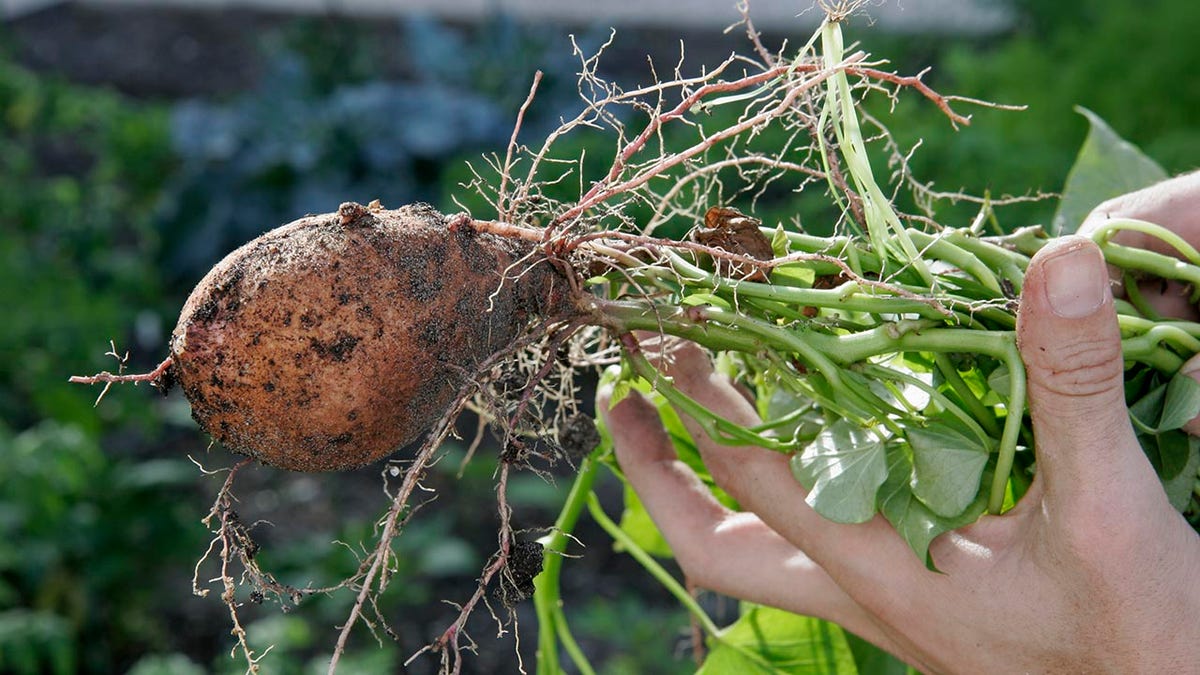
A harvested sweet potato is shown here. (Jeffrey Greenberg/Universal Images Group via Getty Images)
To find the harvesting "sweet spot," Damiano shared that the first step is to examine the part of the plant that’s above ground.
When at least half of the leaves have turned yellow — which will occur between 60 and 120 days from planting, depending on potato type and weather — hold off on watering.
EAT THESE 5 POWER FOODS TO HELP PREVENT CANCER
Espiritu directed gardeners to slow down their watering once the plants flower. This will allow tubers to harden and improve storage life later.
An optional next step, especially in wet climates, is to cut the plants to soil level, which Damiano said will aid in tuber maturation.
Regardless, potatoes will be ready to harvest two weeks after pulling back on watering or once the plant completely dies back.
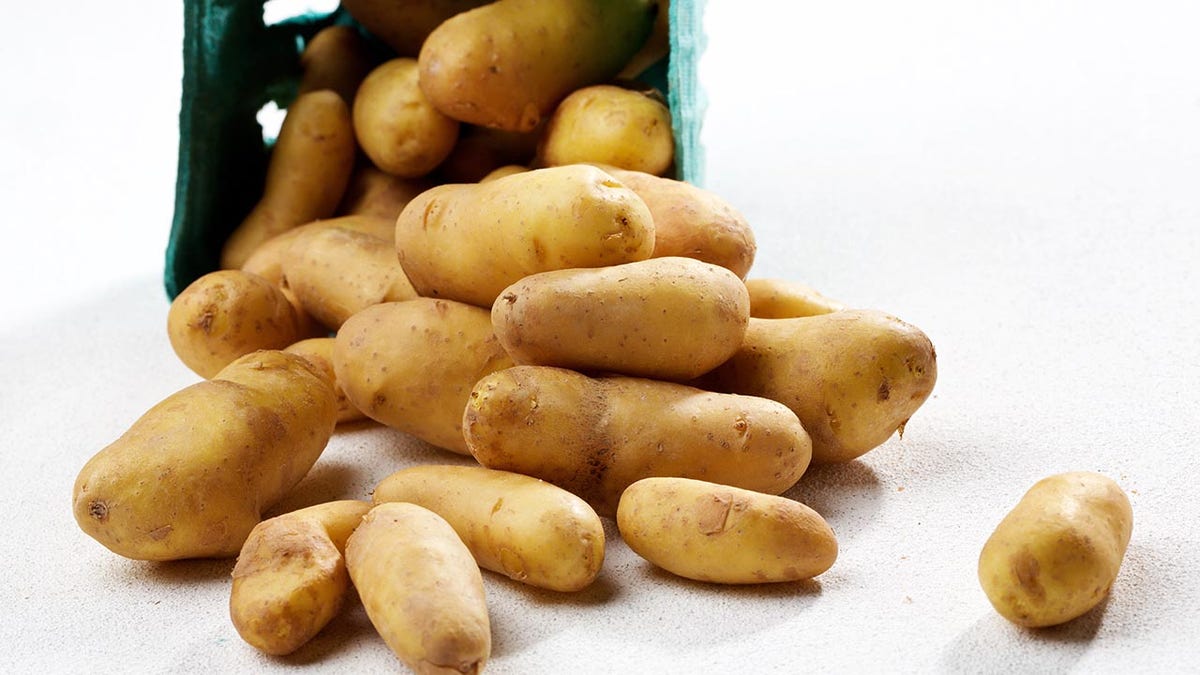
Fingerling potatoes are shown in Washington, D.C. (Deb Lindsey For The Washington Post via Getty Images)
If you’re still unsure about timing, Damiano suggested testing your potatoes' readiness by digging beside a sample plant and pulling up a potato from the external portion of the root system.
Rub the potato with your finger: If the skin stays intact, it’s mature.
HOW GARDENERS CAN CONTROL PESTS, PROTECT POLLINATORS
If the skin rubs off, your potatoes need a little more time.
Refill the hole and give it another week before checking again.
When it’s finally time to unearth your spuds, Damiano advised using a digging or spading fork instead of a spade or shovel to prevent accidental potato piercing.
Insert your tool of choice six to 12 inches from the plant’s perimeter and begin digging, rocking back and forth to lift the roots.
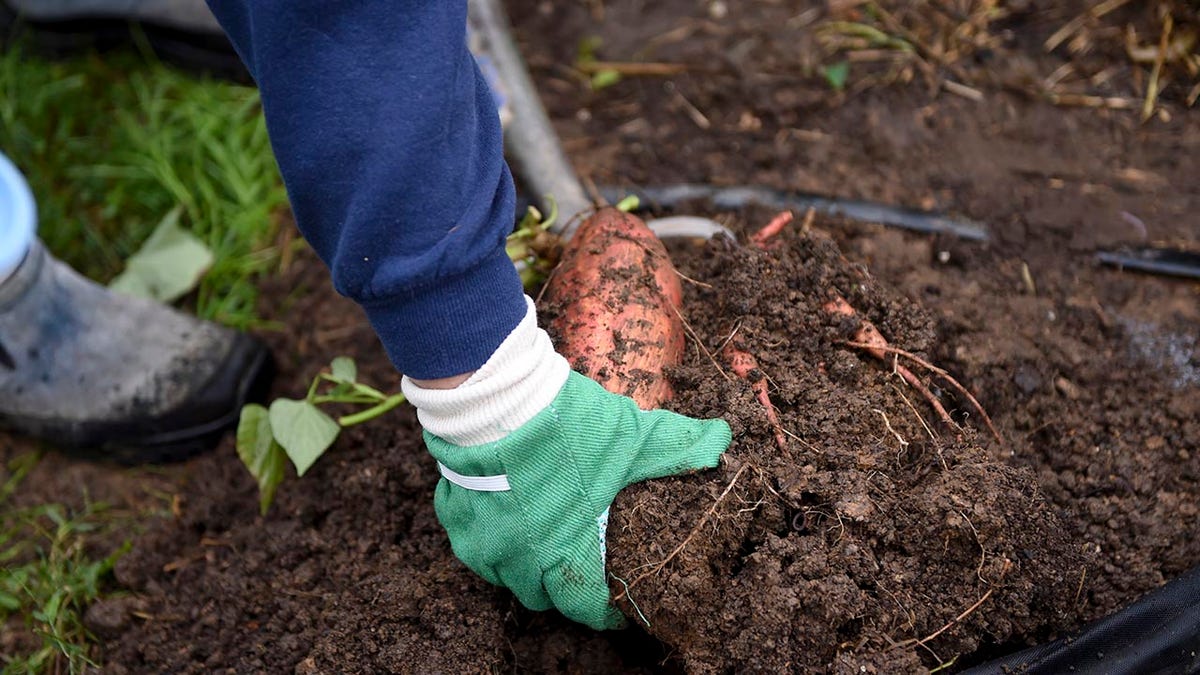
Some massive sweet potatoes are harvested for winter in Oct. 13, 2017. (Lauren A. Little/MediaNews Group/Reading Eagle via Getty Images)
Work your way in a circle around each plant as you continue pulling up and popping out potatoes.
Sift through the soil after each plant is pulled up to ensure that no potato was left behind.
STATE FLOWER QUIZ! CAN YOU MATCH THESE BEAUTIFUL FLOWERS WITH THEIR CORRECT STATES?
Even though some potatoes can be eaten right away, most potatoes need some time alone, above ground, to stiffen, thicken their skin and heal.
To extend shelf life, Damiano instructed gardeners to place potatoes on newspaper or cardboard and store them in a dark, cool room to cure for two weeks.
Storing your potatoes in a cool, dark place like a cellar could give them a life expectancy of six to eight months, Damiano said.
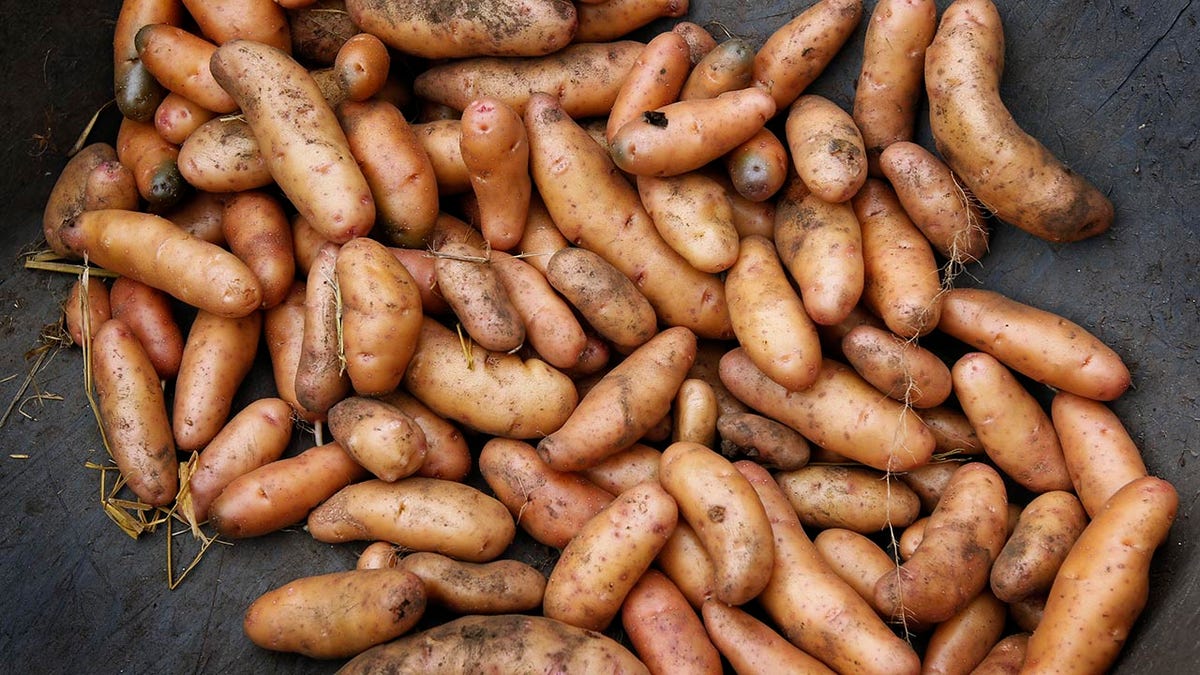
Just-picked Finnish fingerling potatoes are gathered at a community garden in Sea Ranch, Calif., on July 19, 2012. (Paul Chinn/The San Francisco Chronicle via Getty Images)
Avoid refrigerating and use bruised or damaged potatoes first, since those won’t keep as well.
If you’re growing new potatoes, they can be harvested earlier in the season once plants begin to flower and vines look wilted.
CLICK HERE TO GET THE FOX NEWS APP
True new potatoes are young, thin-skinned tubers that don’t cure or store well, so they should be consumed immediately, said Damiano.
Meanwhile, the vines on larger potato plants should be completely dead before digging, said Espiritu.
The Associated Press contributed reporting to this piece.



